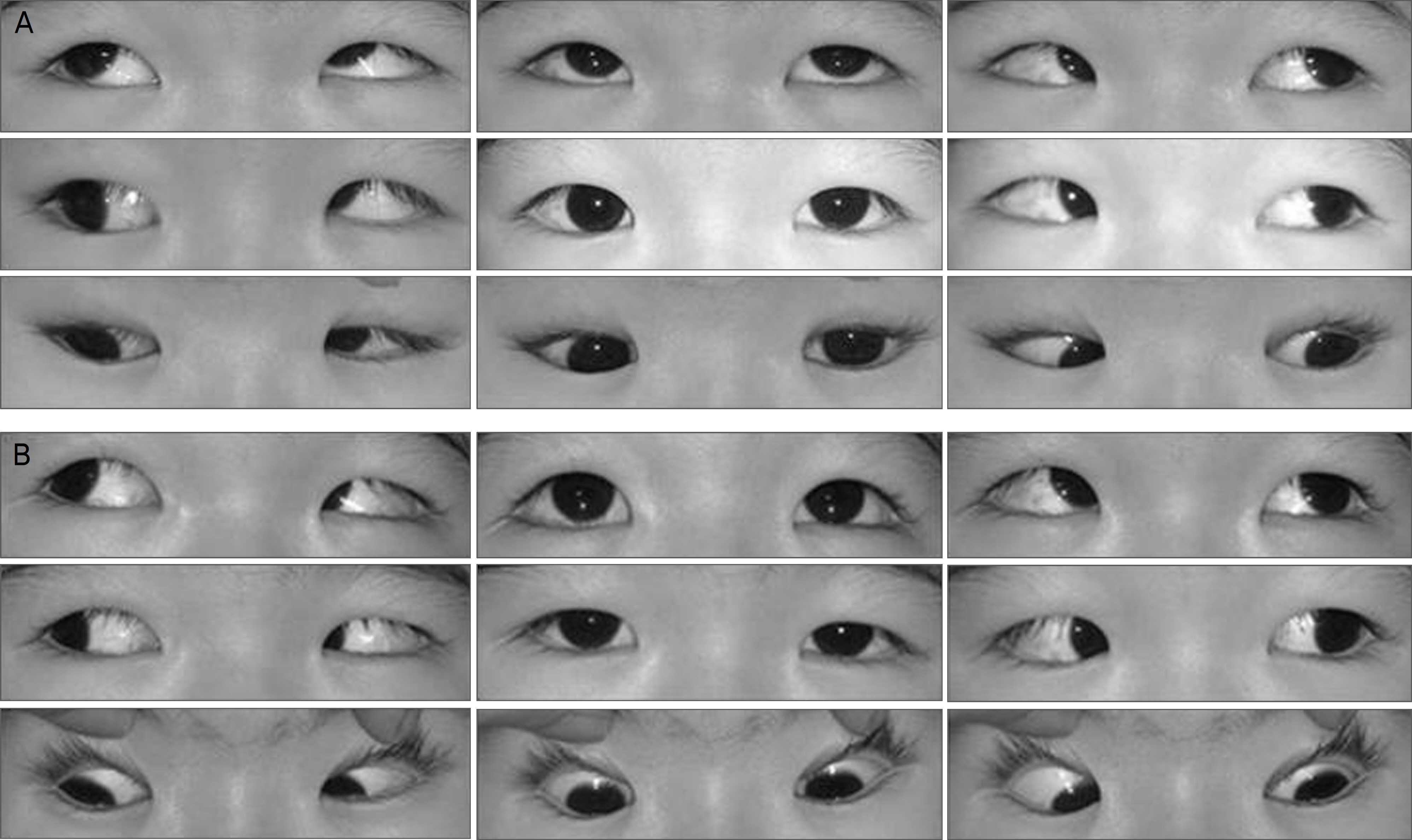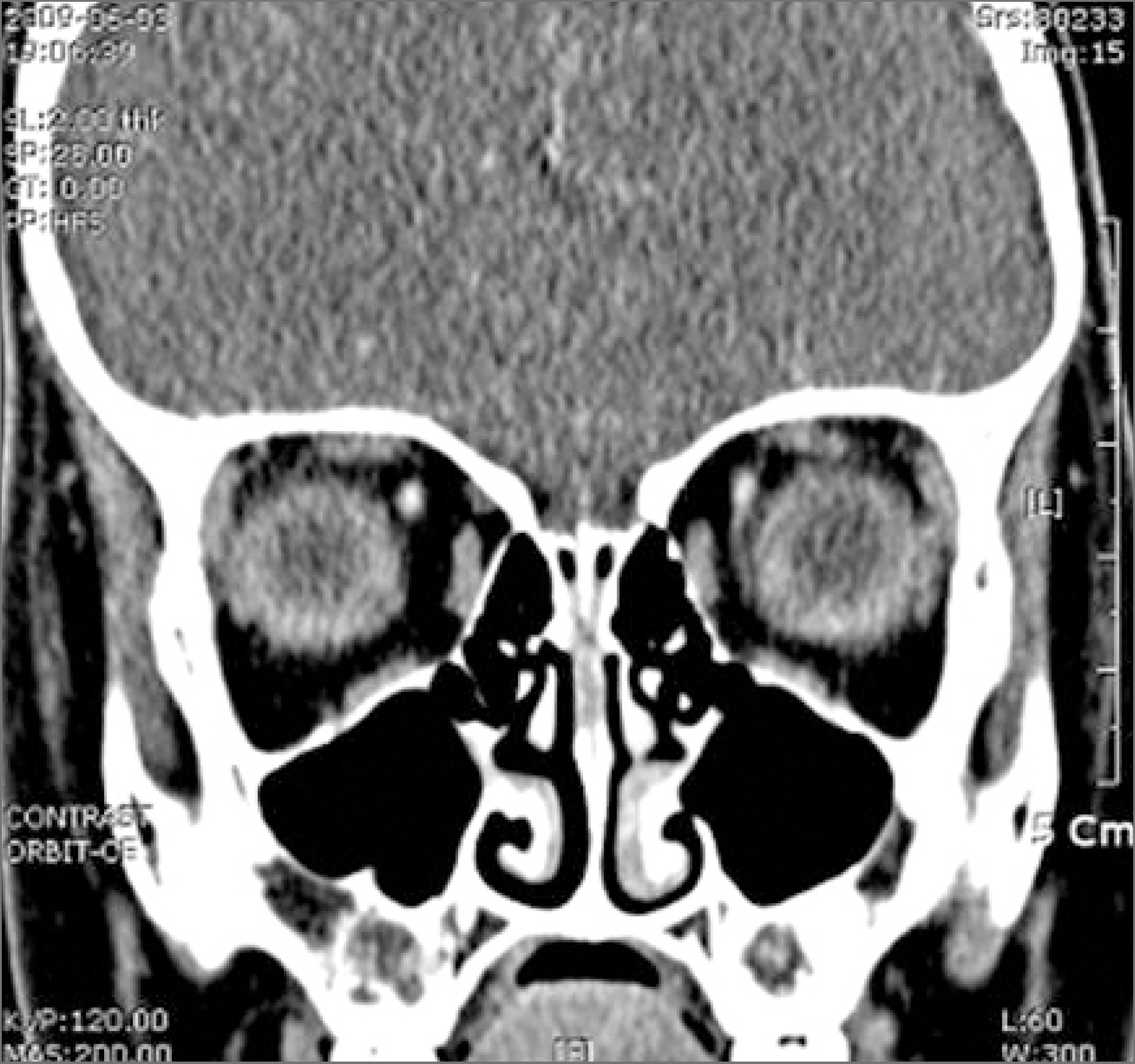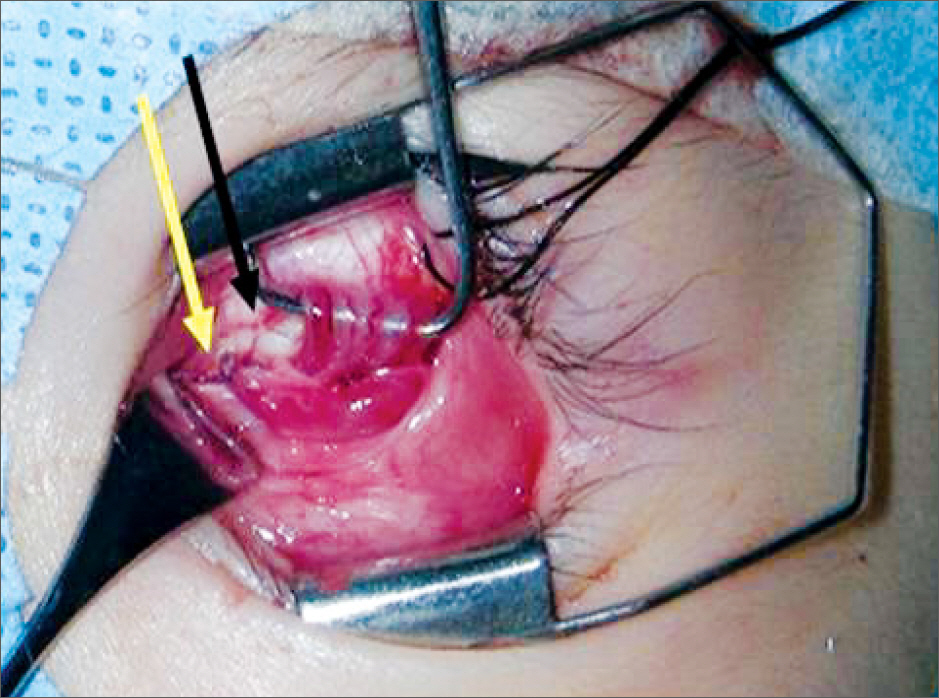J Korean Ophthalmol Soc.
2010 Jul;51(7):1032-1035. 10.3341/jkos.2010.51.7.1032.
A Case of Congenital Absence of the Superior Oblique Muscle Treated With Anterior and Nasal Transposition of the Inferior Oblique Muscle
- Affiliations
-
- 1Department of Ophthalmology, Korea University College of Medicine, Seoul, Korea. mdsuh77@naver.com
- KMID: 2213798
- DOI: http://doi.org/10.3341/jkos.2010.51.7.1032
Abstract
- PURPOSE
To report a patient with absence of the superior oblique (SO) muscle of the left eye, who showed improvement after anterior and nasal transposition of the inferior oblique muscle for left hyperdeviation and right head tilt.
CASE SUMMARY
A two-year-old boy presented with hypertropia of the left eye and right head tilt. Alternate prism-cover test in the primary position demonstrated 18 prism diopters (PD) of left hypertropia, which increased to 35 PD in the left head tilt position. A version test demonstrated overaction of the left inferior oblique muscle and underaction of the left superior oblique muscle. As an orbit CT scan showed absence of the SO muscle, the patient was diagnosed with congenital absence of SO and left anterior and nasal transposition of the inferior oblique muscle was performed. Three weeks after surgery, the patient presented with orthotropia at distant and near. The version test revealed normal oblique muscles. There was no vertical deviation shown on the Bielschowsky head tilt test. The abnormal head posturing was no longer observed.
CONCLUSIONS
The authorsreport a patient manifesting abnormal head posture and hypertropia, diagnosed with absence of SO muscle, which was successfully corrected using anterior and nasal transposition of the inferior oblique muscle.
Keyword
Figure
Reference
-
References
1. Pinchoff BS, Sandall G. Congenital absence of the superior oblique tendon in craniofacial dysostosis. Ophthalmic Surg. 1985; 16:375–7.
Article2. Pollard ZF. Bilateral superior oblique muscle palsy associated with Apert's syndrome. Am J Ophthalmol. 1988; 106:337–40.
Article3. Lo CY, Nakamura K. Congenital absence of the superior oblique tendon in Down's syndrome. Jpn Rev Clin Ophthalmol. 1987; 81:1312–3.4. Barnes J, Boniuk M. Anencephaly with absence of the superior oblique tendon. Surv Ophthalmol. 1972; 16:371–4.5. Wallace DK, von Noorden GK. Clinical characteristics and surgical management of congenital absence of the superior oblique tendon. Am J Ophthalmol. 1994; 118:63–9.
Article6. Cho YA, Kim S. A case of congenital absence of the superior oblique muscle. J Korean Ophthalmol Soc. 2004; 45:631–5.7. Stager DR Jr, Beauchamp GR, Wright WW, et al. Anterior and nasal transposition of the inferior oblique muscles. J AAPOS. 2003; 7:167–73.
Article8. Hussein MA, Stager DR Jr, Beauchamp GR, et al. Anterior and nasal transposition of the inferior oblique muscles in patients with missing superior oblique tendons. J AAPOS. 2007; 11:29–33.
Article9. Helveston EM, Krach D, Plager DA, Ellis FD. A new classification of superior oblique palsy based on congenital variations in the tendon. Ophthalmology. 1992; 99:1609–15.
Article10. Mumma JV. Surgical procedure for congenital absence of the superior oblique. Arch Ophthalmol. 1974; 92:221–3.
Article
- Full Text Links
- Actions
-
Cited
- CITED
-
- Close
- Share
- Similar articles
-
- The Effect of Modified Anterior Transposition of the Inferior Oblique Muscle for Hypertropia in Superior Oblique Muscle Palsy with Inferior Oblique Muscle Overaction
- The Effect of Anteriorization of The Inferior Oblique Muscle in +3 or +4 Inferior Oblique Overaction
- The Effect of Inferior Oblique Muscle Transposition in Primary and Secondary Inferior Oblique Muscle Overaction
- The Effect of Anterior Transposition with J-Deformity for Overaction of the Inferior Oblique Muscle
- A Case of Contralateral Pseudo Inferior Oblique Overaction after Unilateral Inferior Oblique Anterior Transposition






